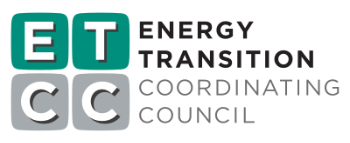Project Info
ACTIVE
Project Title
Packaged Propane Refrigeration Market Analysis
Project Number ET25SWE0011 Organization SWE (Statewide Electric ETP) End-use Process Loads Sector Commercial Project Year(s) 2025 - 2026Description
California has nearly 200,000 walk-in refrigerators and freezers in the food & beverage, retail, and restaurant markets. Most of this equipment relies on high-GWP synthetic refrigerants that, when leaked, are significant contributors to greenhouse gas (GHG) emissions. VEIC proposes to conduct a market analysis and measure development recommendations to assess the market potential and technology performance of packaged propane refrigeration systems for walk-in coolers and freezers in small-to-medium food retailers and food service establishments.These hydrocarbon systems, which use propane (R290) as a refrigerant, are relatively new to the U.S. market. Early findings show that packaged R290 systems provide significant energy savings, easier installation, and reduced maintenance costs compared to conventional remote condensing units. Utilizing a natural refrigerant, these systems offer a future-proof, resilient, and scalable solution, making them ideal for smaller and underserved businesses. Additional research is needed to fully understand the extent of their applications, availability, and performance, and this project seeks to address that. The project will address the challenges and solutions for scaling packaged propane systems, particularly for small-to-medium sized retailers and hard-to-reach businesses, who face some of the highest operating costs on a per square foot basis.The drive towards R290 is gaining momentum due to tightening federal and state regulations surrounding refrigerants. R290 is seen as an ideal refrigerant alternative because of its low environmental impact and favorable thermodynamic properties. Although there are currently no state regulations for small refrigeration systems in California, upcoming federal regulations will mandate leak repairs for systems with more than 15 lbs. of high-GWP refrigerants. Compliance with these new regulations could place disproportionate financial strains on HTR businesses, which often use small refrigeration systems containing less than 50 pounds of refrigerant. Without support, they may continue to rely on inefficient and environmentally harmful refrigeration systems. To promote a fair transition to natural refrigerants like R290, the project will develop strategies to demonstrate the benefits of sustainable refrigeration solutions, with a focus on helping these small businesses and their surrounding communities.The project will engage with packaged propane system manufacturers, distributors, contractors, regulators, and operators to prepare a comprehensive analysis that will identify the key barriers to widespread implementation of this technology. The project will assess what is needed for measure package development and provide utility program administrators with program recommendations for a new energy efficiency measure, effectively promoting the transition to natural refrigerants and increasing Total System Benefit (TSB) value. Ultimately, the project seeks to demonstrate that R290 refrigeration systems can reduce energy use, maintenance costs, and emissions, making them a viable and sustainable option for a wide range of businesses, particularly those in the food retail and service sectors. This project will be conducted in parallel with and be complementary to San Francisco Environment’s performance validation project: Scaling the Use of R290 in HTR Businesses. While their project focuses on field demonstrations, this project will provide market analysis that will streamline the research and strengthen the results of both projects.
